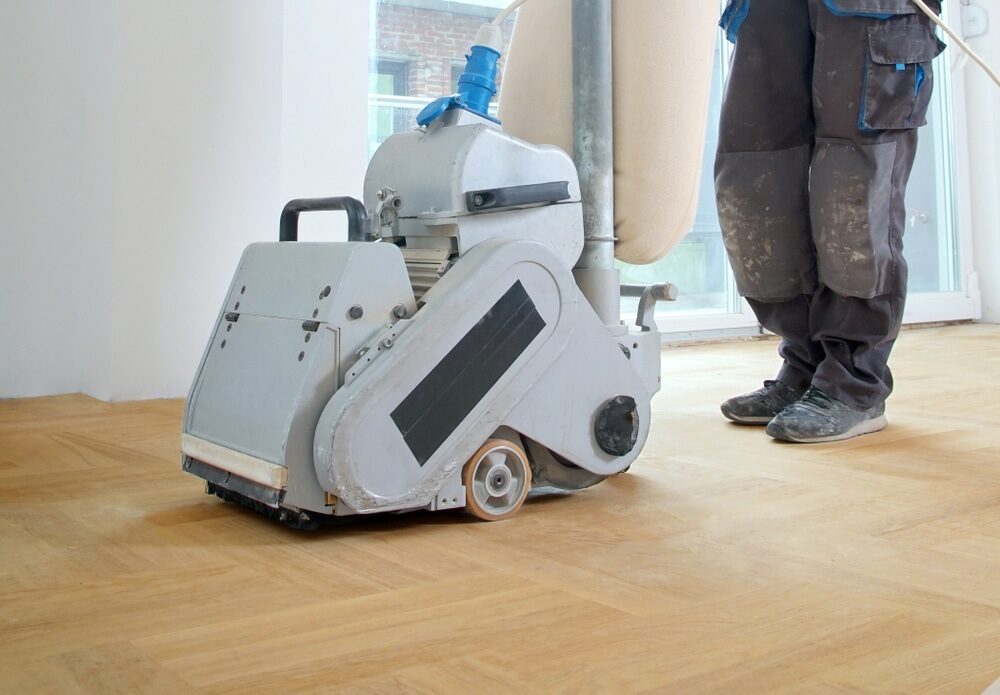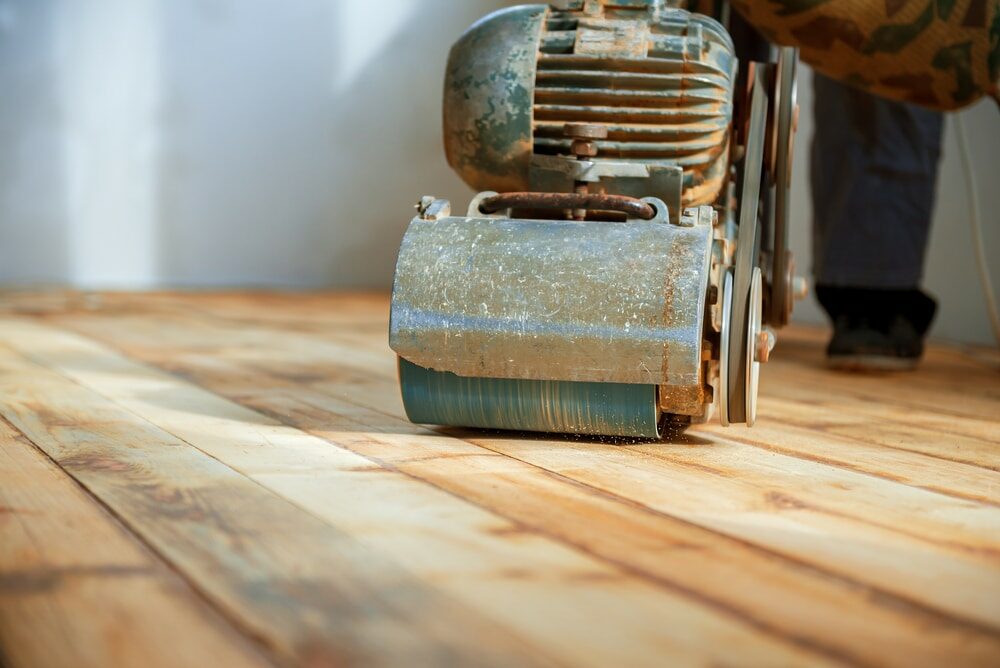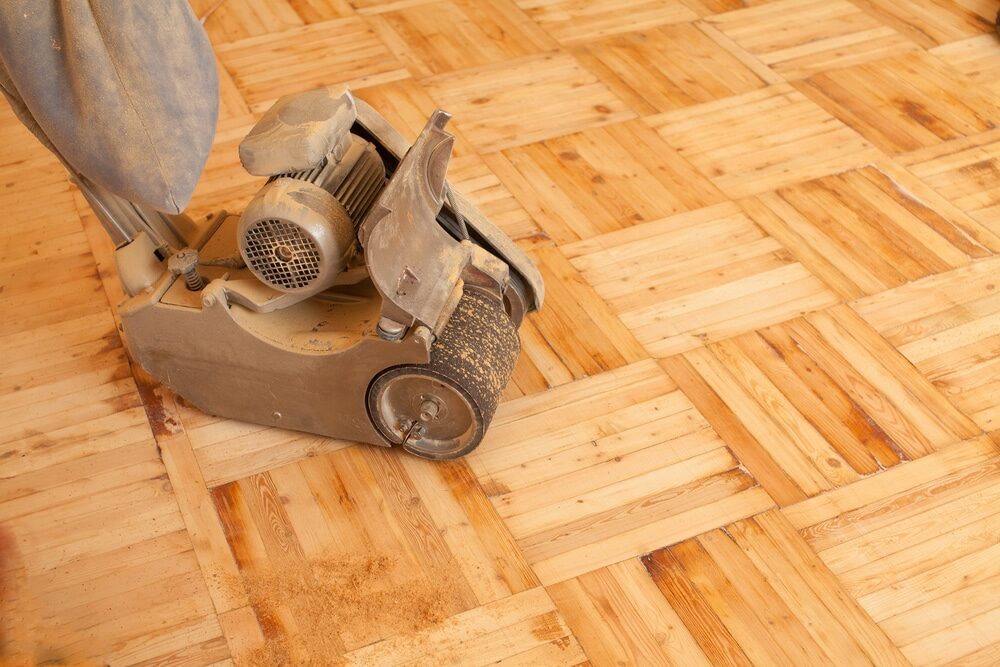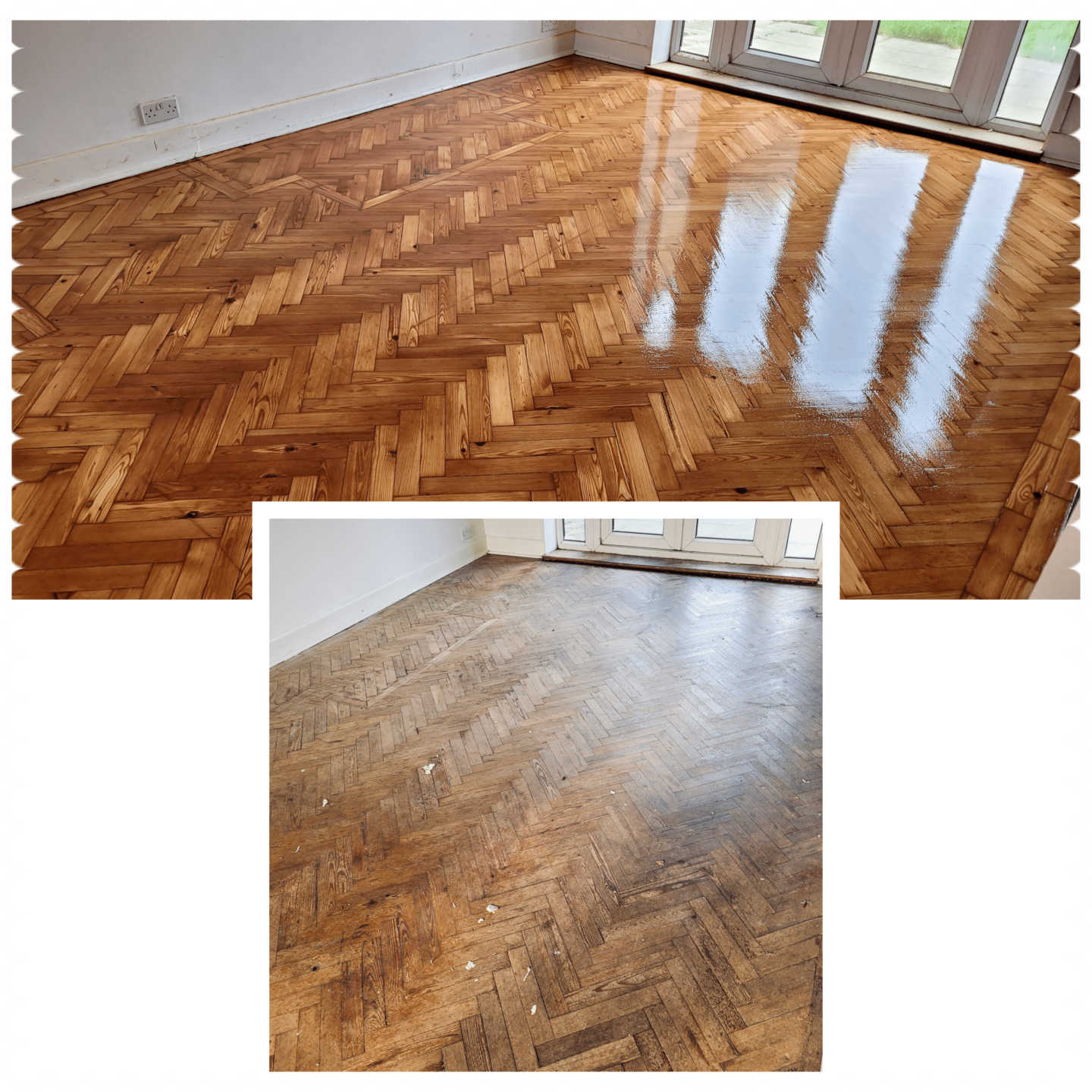London:
Nationwide:
Top 10 Questions About Wood Floor Sanding Answered
Posted on June 30, 2023
Blog
Your Top 10 Wood Floor Sanding Questions Answered
Wood floors add timeless beauty and warmth to any home, but they also require proper maintenance to keep their allure intact. One crucial aspect of this maintenance is sanding. Let’s take a look at the ten most popular wood floor sanding questions to help you navigate this process with ease.
1. What is Wood Floor Sanding?
Wood floor sanding is a process where the top surface of a wooden floor is removed by abrasive materials. It involves three primary stages: preparation, sanding, and coating with a protective sealant. Sanding is typically done to repair damages, remove old finishes, and bring back the floor’s original beauty.2. When is Floor Sanding Necessary?
You may need to consider sanding your wooden floors if they’re significantly worn, damaged, or if the existing finish is flaking or peeling. Additionally, if you plan to change the color of your floor, sanding is required to remove the old stain and prepare the wood for a new one.3. How Often Should You Sand Your Floors?
How often you need to sand your floors will depend on the type and thickness of your wood, the wear and tear it faces, and the quality of the previous sanding job. As a rule of thumb, a wood floor might need sanding every 7–10 years, but this can vary significantly.4. Can You Sand Your Wood Floors Yourself?
While it’s possible to sand your floors yourself, it’s a labor-intensive task that requires patience, skill, and the right equipment. An incorrectly done sanding job can lead to uneven surfaces or damage that can be expensive to repair. Therefore, if you’re inexperienced, it’s best to hire a professional.5. What Equipment Do You Need for Floor Sanding?
For a DIY floor sanding project, you’ll need a drum or orbital sander, an edge sander, a hand scraper, a vacuum cleaner, and sandpaper of various grits. You’ll also need safety gear like goggles, ear protection, and a dust mask.6. What’s the Sanding Process?
The sanding process generally involves three stages: rough sanding, medium sanding, and fine sanding.- Rough sanding removes old finishes and major imperfections. It’s usually done with coarse-grit sandpaper.
- Medium sanding smooths the floor, erasing scratches left by the coarse-grit paper.
- Fine sanding is the final pass, done with fine-grit paper to provide a smooth surface for finishing.
7. How Do You Minimize Dust During Sanding?
While it’s impossible to have a completely dust-free sanding process, you can minimize dust by using high-quality sanding machines with attached vacuum bags. Using a good-quality vacuum cleaner to clear the dust after each pass is also beneficial.8. Can All Wood Floors Be Sanded?
Not all wood floors can be sanded. Engineered wood floors have a thin layer of real wood on top, which can be sanded only a limited number of times before it wears away completely. Very old, worn floors or those that have been sanded several times might not be suitable for further sanding.9. What Comes After Sanding?
After sanding, the next step is applying a finish to protect the wood and enhance its appearance. This might include staining the wood for color, then applying a protective coat like varnish, polyurethane, or oil.10. How Long Does the Floor Sanding Process Take?
The time required for floor sanding varies depending on the floor’s size, the number of rooms, the state of the floor, and whether you’re doing it yourself or hiring a professional. On average, the sanding process can take 2–5 days, but it can be longer if the floor needs significant repairs.Conclusion
Wood floor sanding is a significant task that helps maintain the longevity and appeal of your wooden floors. It is a process that can be done DIY but requires patience, the right tools, and a good understanding of the process. It’s always recommended to reach out to professionals for advice or hire their services to ensure the best results.Some Useful Links:
- Floor Sanding Services
- School Floor Sanding
- Wood Floor Restorations
- Wood Floor Repairs
- Wood Floor Polishing
More from our Blog:
Repair Parquet Flooring in Your London Home By Hiring Mr Sander® Company Successfully Renovate Any Type of Wood Flooring in the Home Protecting Your Wood Floors During Winter: Effective Maintenance Tips Sanded Wood Floors or Carpet: Choosing the Best Home Flooring Refinish a Hardwood Floor: Your Comprehensive Guide
Sanding
We provide virtually dust-free sanding with our continuous belt machinery with mobile extraction units, giving you a safer environment for your family.
Oiling
This organic finish not only adds beauty to your home but also has exceptional water-repellent characteristics, making it easier to clean and maintain.
Waxing
This natural floor finish offers the softest and most mellow appearance – and leaves your floor able to breath.
Buffing
Using soft buffing machines (and hand-polishing where required) will bring a wonderful sheen to your newly-finished floor.
Repairs
We offer a full assessment of your wooden floors to determine what repairs are needed to provide the perfect working surface for the later stages of sanding, staining and sealing.
Restoration
We offer a comprehensive restoration process designed to address floors that are improperly fitted or damaged over time through wear and tear.
Request a fixed price quote for your wood floor restoration now
Simply enter your postcode below to get started.
Services
Wood Floor Sanding Wood Floor Restoration Wood Floor Scratch Repair Squeaky Wood Floor Repair Parquet Floor Sanding Parquet Floor Restoration Commercial Floor Sanding School Floor Sanding Gap FillingCopyright © Mr Sander®
Privacy & Cookies Terms & Conditions Complaints Procedure Cancellation Rights Sitemap





